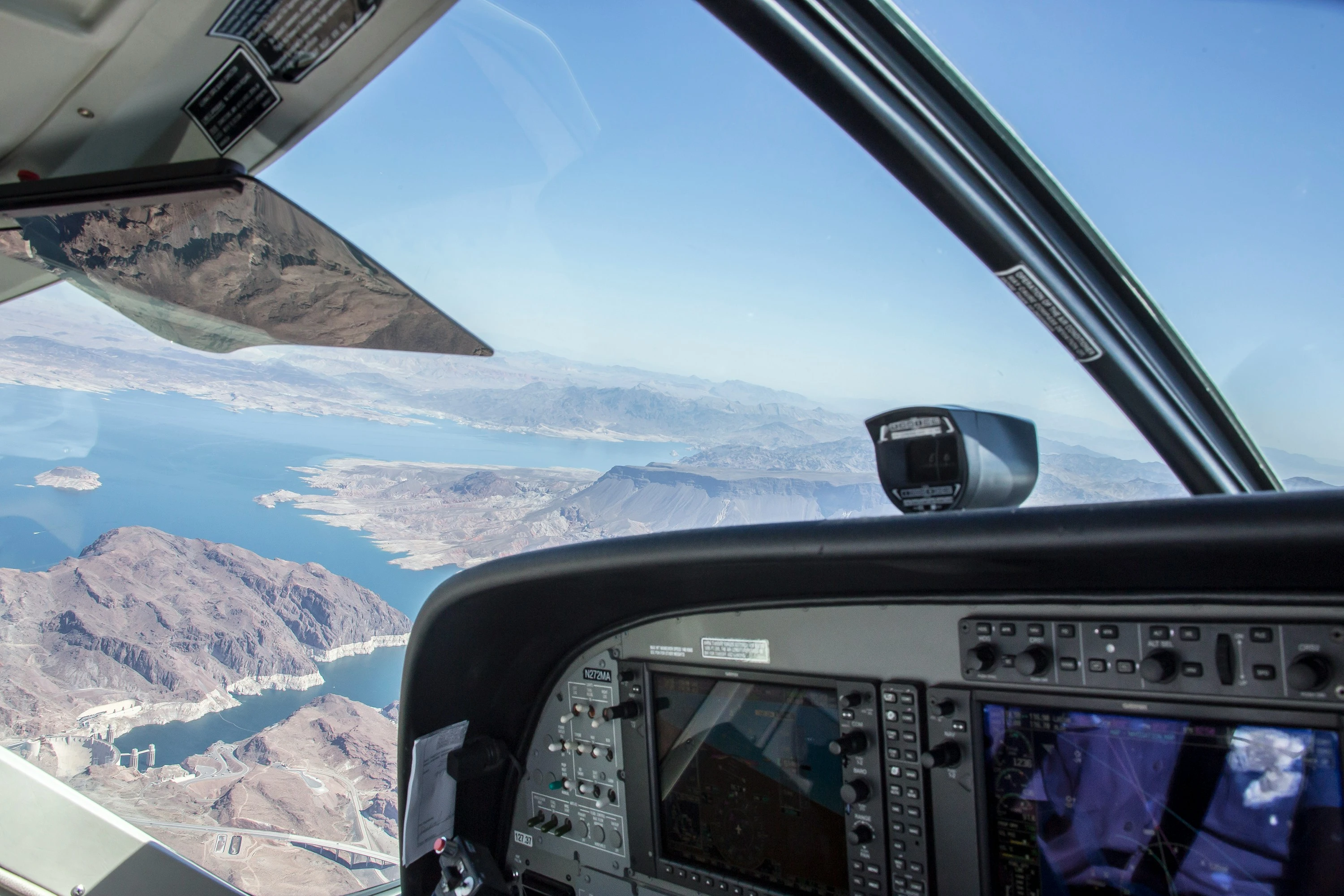Checklists provide a standardized framework for pilots to follow, ensuring that they complete all necessary steps methodically and thoroughly. By systematically checking each item on the list, pilots can verify that critical systems function correctly, safety procedures are followed, and potential hazards are identified and mitigated.

The ATOMATOFFLAMES Checklist
There are several checklists pilots can use to mitigate risk when flying. One them is the ATOMATOFLAMES checklist. The ATOMATOFLAMES checklist is used by a pilot to determine if all of the aircraft is properly equipped for VFR operations required by FAR 91.205(b) for aircraft with a standard airworthiness certificate:
Anti-collision lights
Anti-collision lights are flashing red lights required on small civil airplanes certificated after March 11, 1996. They are also known as beacon or strobe lights and are designed to improve visibility to others.
Tachometer
A tachometer is a device that counts the number of revolutions per minute (RPM) of the aircraft engine. Each engine must be equipped with a tachometer.
Oil Pressure gauge
An oil pressure gauge minors the oil pressure of the aircraft. It can also serve as a key indicator of the general health of your engine or when troubleshooting a problem inflight. Each engine using a pressure system must be equipped with an oil pressure gauge.
Magnetic direction finder
A magnetic direction finder is an instrument used onboard an aircraft as a navigational aid.
Airspeed indicator
An airspeed indicator is a device that determines the forward speed of the aircraft using the aircraft’s pitot-static system. It compares the differential between the pressure of still air (air that enters through the static port) and the pressure of the moving air compressed by the aircraft’s forward motion (ram air through the pitot tube) to determine forward speed.
Temperature gauge
A temperature gauge is only required on a aircraft that is equipped with a liquid-cooled engine. If the aircraft is equipped with more than one engine, then each engine much have a temperature gauge.
Oil temperature gauge
An oil temperature gauge indicates the temperature of the oil in each engine and can also serve as a key indicator of the general health of your engine or when troubleshooting a problem inflight. An oil temperature gauge is required for each air-cooled engine.
Fuel gauge
A fuel gauge that indicates when a fuel tank is empty is required for each fuel tank.
Flotation
If operating over water, and for hire, a flotation device is required for each passenger.
Landing gear extension lights
If the aircraft has fixed gear, landing gear extension lights are not required.
Altimeter
An altimeter indicates the altitude of the aircraft above a fixed level. There are various types of altitude. An altimeter is required for VFR.
Manifold pressure gauge
A manifold pressure gauge is an engine instrument typically used in piston aircraft to measure how much air is inside the induction system before the air/fuel mixture enters the cylinders. If your aircraft does not come from the manufacturer fitted with a manifold pressure gauge, then it is not necessary for VFR.
Emergency locator transmitter
An emergency locator transmitter (ELT) broadcasts signals on designated frequencies used only for emergency. Som ELT’s are automatically activated by impact, others are manually activated.
Seatbelts/Shoulder harness
Safety belt and shoulder harness is required in small civil airplanes manufactured after July 18, 1978.
The FLAPS Checklist
In addition, the FLAPS checklist is used by a pilot to determine if all of the aircraft is properly equipped for VFR operations as required by FAR 91.205(c):
Fuses (or circuit breakers)
One spare set of fuses or three spare fuses of each kind are required to be onboard and accessible to a pilot.
Landing gear extension lights
As stated previously, if the aircraft has fixed gear, landing gear extension lights are not required.
Anti-collision lights
Anti-collision lights are flashing red lights required on small civil airplanes certificated after March 11, 1996. They are also known as beacon or strobe lights and are designed to improve visibility to others.
Position lights
Position lights are also known as running, or navigation lights. They serve as indicators of the aircrafts position, heading, and status. Position lights consist of a red light on the left wingtip, a green light on the right wingtip, and a white light as far aft as possible on the tail.
Source of power
A source of power could be either an alternator or battery. The FAA requires an adequate source of energy for all installed electrical and radio equipment.
Ensuring an aircraft is airworthy is very important as a pilot. The ATOMATOFLAMES and FLAPS checklists serve as a useful memory aid in ensuring all legal inspection requirements are met for the safe operation of an aircraft.
Commit these checklists to memory. They will prove useful to you whether you simply fly recreationally on occasion, or have a career in aviation.
By Engine Sales Representative, Joshua Denton
YOU MAY ALSO LIKE:
Understanding the Aircraft Spark Plug - When it comes to the intricate machinery of aircraft engines, even the smallest components play a crucial role.
A Pilot's Guide to Pre-Flight Checks - This guide provides an in-depth exploration of the nuances and intricacies of pre-flight inspections, empowering you to perform them with absolute confidence.
Pilot Certifications Part 1: Sport Pilot Certificate - Each type of pilot certificate has different eligibility, training, experience, and testing requirements.
*SHOP ENGINE PARTS HERE!*
Find What You Need at Air Power Inc.!
Questions? Our team is ready to assist you anytime. Your aviation success starts at Air Power!
CONTACT US






